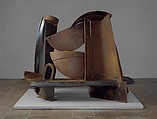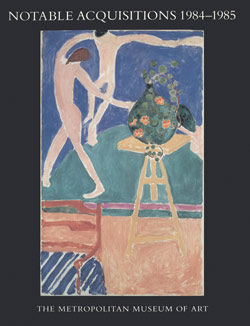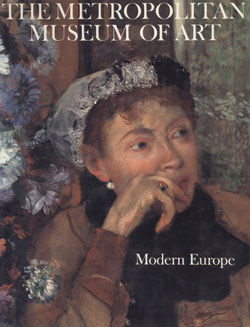Odalisque
Anthony Caro British
Not on view
In the early 1950s British sculptor Anthony Caro created figurative bronzes that reflect his academic training and his assistantship with Henry Moore. During the mid- to late 1950s Caro retained his interest in figurative subjects but developed a style related to that of Abstract Expressionist painting. In 1959, after his initial contact with three Americans — art critic Clement Greenberg, painter Kenneth Noland, and sculptor David Smith — Caro made a radical change, to abstract welded-metal constructions. Pablo Picasso and Julio González had experimented with welded sculpture (as opposed to carved, modeled, or cast sculpture) in the 1930s. Subsequently, during the late 1940s and 1950s, Smith greatly expanded upon its themes and technology in works that revolutionized twentieth-century sculpture. Caro's work of the 1960s in welded metal differs markedly from that of his predecessors in its horizontal orientation, low placement (often below eye level), and brightly painted surfaces. Space, defined by linear elements, is focused on open, negative areas.
Odalisque represents the artist's shift, since the late 1970s, toward more concentrated, solid forms that emphasize volume and weight. It is composed of several massive forms of rusted steel, some of which are pieces of maritime buoys and chains that have been cut apart and joined to other abstract elements. There is an elegant dialogue between vertical and horizontal movements, curved and straight lines, and convex and concave forms. Unlike much of his earlier work, which has a single, frontal orientation, this piece can be viewed from both front and back. The front is dominated by rectilinear and inverted forms and sharp straight edges, and the back by large rounded shapes and arcs. The ample forms and voluptuous curves of the sculpture correspond to the image of a sensuous harem concubine suggested by the title.
Due to rights restrictions, this image cannot be enlarged, viewed at full screen, or downloaded.




